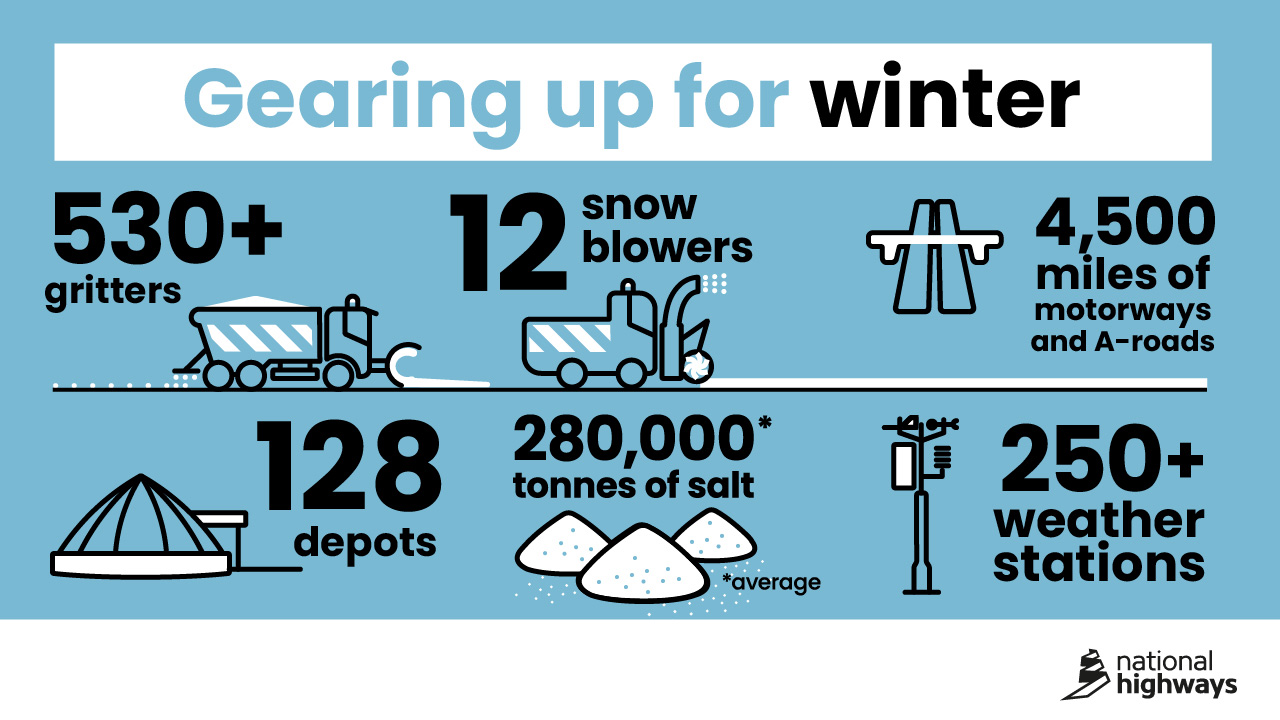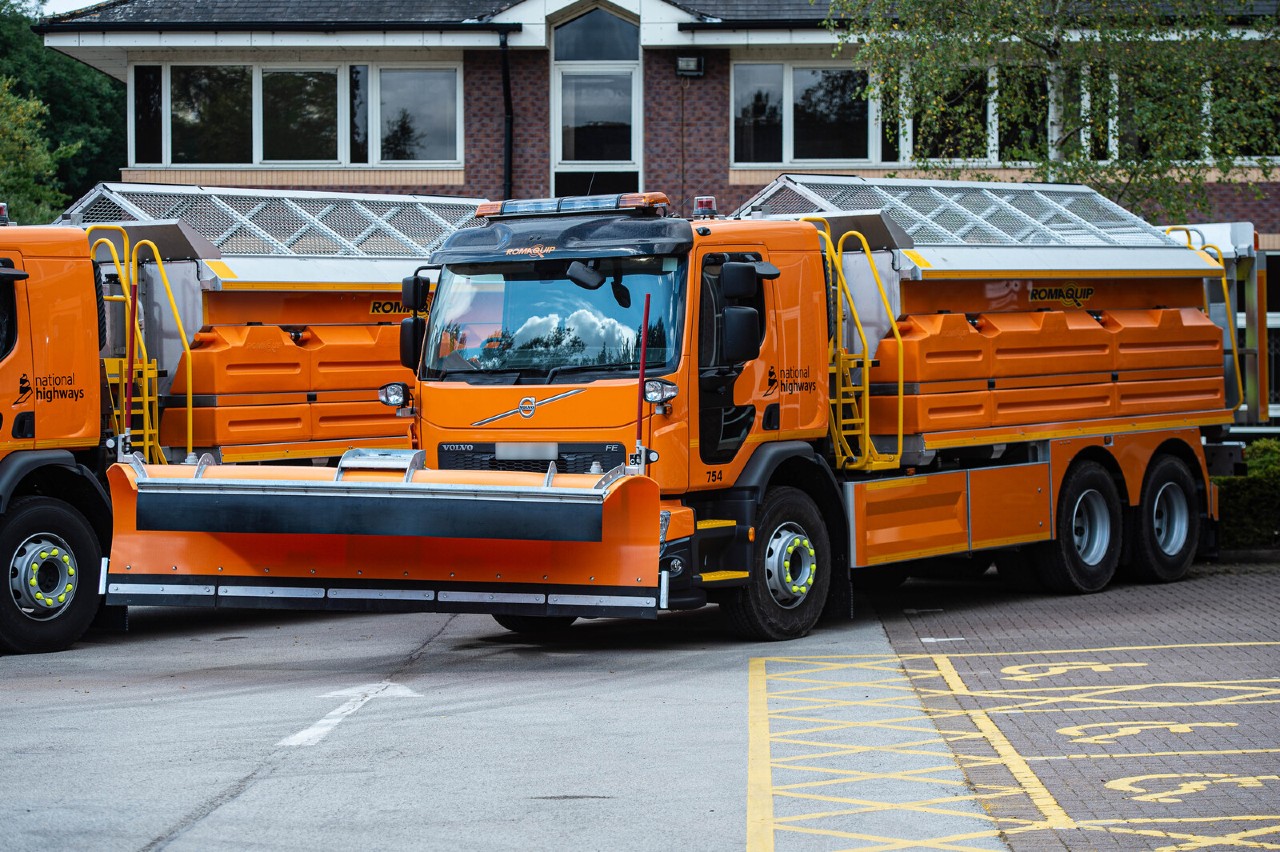Winter driving - how we help you on our roads
We have tried and tested severe weather plans to help keep you safe and moving on our roads during winter.

We operate our winter service from 1 October to early April each year. Our activities are designed to make your journeys more reliable and keep you and our workers safe.
To help keep you on the move, we have over 530 gritters based at 128 depots strategically located across the network. At the start of each winter, we have around 280,000 tonnes of salt stored in our barns.
When the weather gets severe, all our gritters can have snow ploughs fitted, and we also have 12 snow blowers which can remove up to 1,200 tonnes of snow per hour.
We have more than 250 weather stations across our network, monitoring the conditions around the clock. We use this information on overhead signs to warn you of severe weather and road conditions.

What we do during winter
Our winter maintenance teams operate 24 hours a day. We have over 360 salting and ploughing routes which cover the strategic road network.
We work closely with our weather forecasters for the latest weather updates. During winter we have a weather forecast team based at our National Traffic Operations Centre. We use this information on overhead signs to warn you of severe weather and changing road conditions.
We also have over 120 trained winter decision-makers, providing a 24/7 service, receiving road weather forecasts several times a day and monitoring road conditions through the data provided by our weather stations. They identify the best time to send our gritters out, working closely with our traffic officers, contractors and emergency services.
Salting our roads
Since 2018, we have been investing in a new fleet of gritters many of which are replacing our existing fleet. The new vehicles provide greater safety for our 1,600 gritter drivers due to improved technology and enhanced visibility. They can spread salt at speeds of up to 50mph - 10mph faster than earlier models.
On the vast majority of our routes we use rock salt - we don’t use grit, as many people often think. Most of our rock salt is from UK sources such as mines in Winsford in Cheshire, or Boulby in Cleveland.

The journey of salt
The majority of our vehicles can spread either dry salt or pre-wetted salt. Dry salt spreading involves spread rock salt direct from the spinner at the back of the gritter onto the road. This is particularly useful in damp or wet road conditions.
Pre-wetted salt is a mixture of a brine solution sprayed onto the rock salt as it leaves the rear of the gritter. Brine is made in our depots where we mix water with a pure white marine salt. It's stored in tanks and pumped into the side tanks on the gritters. We use pre-wetted salt on most occasions as this reduces the environmental impact. It's also used when road surfaces are dryer but there is a risk of frost, ice or snow.
We use salt no larger than 6mm in size which breaks down into smaller grains quite easily. Salt will start to work once it touches the road surface however trafficking can help break down the salt more quickly which aids dissolution.
All of our routes can be treated within 2-3 hours and we work to ensure that the salt has been spread onto the road surface before the road surface drops below 0°C to minimise the risk of frost or ice forming. Our roads are also treated prior to any expected snowfall. Salt will not stop snow from settling on the road surface; however, it does act as a debonding layer, making it easier to plough snow off the roads.
On bridges or sensitive structures, we spray potassium acetate liquid.
Winter travel advice
Our advice about keeping safe and moving when travelling in wintry conditions

